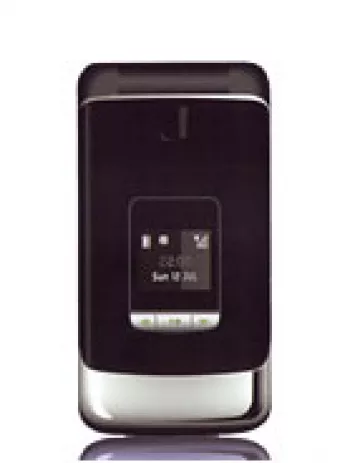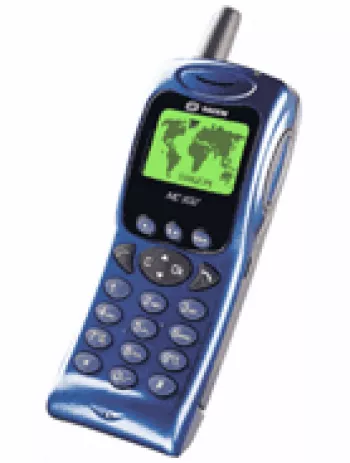
Network Technology and Connectivity
The Sagem my855c operates on GSM and HSPA network technologies, making it compatible with 2G GSM bands of 900, 1800, and 1900 MHz, and a 3G HSDPA band of 2100 MHz. This setup ensures that users can maintain connectivity in multiple regions, benefiting from basic 3G speeds of up to 3.6 Mbps, which was quite adequate for the phone's capabilities at the time of its release. The absence of contemporary 4G or 5G connectivity reflects the phone's primary use for voice calls and simple messaging services rather than high-speed internet browsing.
Launch and Availability
Announced in February 2008, the Sagem my855c was released within the same year. Despite its initial popularity, it has since been discontinued. Its discontinuation is typical for feature phones of that era, which often saw rapid turnover due to the fast-paced evolution of mobile technology during the late 2000s and early 2010s. Nevertheless, the device remains a point of interest for mobile phone enthusiasts and collectors.
Body and Design
The Sagem my855c's design is compact and ergonomic, with dimensions of 96 x 49 x 16 mm and a weight of 95 grams. This balance makes the phone comfortable to hold and easy to carry. It uses a Mini-SIM format, which was standard during its release period. The compact size and relatively light weight contribute to its appeal as a basic mobile phone option, prioritizing functionality over flamboyant design.
Display Features
The device features a 2.0-inch TFT display with a resolution of 320 x 240 pixels, translating to a pixel density of about 200 pixels per inch. Although the screen-to-body ratio is approximately 26.3%, the clarity offered by the TFT display with 256K colors is suitable for displaying simple graphics, basic web pages, and the phone's user interface. Despite the small screen, the Sagem my855c fulfills its purpose as a basic phone with a no-frills display.
Memory and Storage
The Sagem my855c allows for external storage expansion via a dedicated microSD card slot, which was essential at a time when internal storage capabilities were limited. In terms of contact organization, the phone supports a phonebook feature and maintains call records for 20 dialed, 20 received, and 20 missed calls. This emphasis on limited, practical storage reflects its role as a feature phone focused on basic communication tasks.
Camera Capabilities
For its era, the Sagem my855c includes a 2 MP single main camera which also supports basic video recording, offering users the ability to capture rudimentary photos and videos. The phone also includes a VGA camera intended for video calls, a feature indicating its accommodation for early video communication methods.
Audio and Sound
The device is equipped with a loudspeaker and supports vibration and polyphonic ringtones for alerts. However, one notable limitation is the absence of a 3.5mm audio jack, which was a common inclusion in phones at the time. This suggests that audio playback was not a primary feature of the my855c, consistent with its focus on essential phone functions.
Communication Functions
The Sagem my855c includes basic communication technologies, such as Bluetooth 2.0 with A2DP for wireless audio streaming, although it lacks WLAN connectivity. It also includes a proprietary USB interface for data transfer and charging. The absence of GPS and FM radio capabilities are indicative of the phone's emphasis on straightforward mobile use without additional frills.
Additional Features
The device is equipped with basic messaging capabilities, including SMS, MMS, and Instant Messaging. Its browser supports WAP 2.0/xHTML for accessing simplified internet pages. Users can enjoy pre-installed games and the phone's compatibility with Java (MIDP 2.0), extending its usability for light entertainment. It lacks advanced sensor integration, such as accelerometers or proximity sensors, due to its focus as a practical communication tool rather than a feature-rich smartphone.
Battery Life and Management
The Sagem my855c is powered by a removable Li-Ion battery, boasting standby times of up to 300 hours and a talk time of approximately 4 hours and 30 minutes. These specifications reflect the phone's optimization for prolonged use over days without frequent recharging, aligning with the expectations and needs of users during that period. The removable battery design is particularly advantageous for extending the device's lifecycle.
Conclusion
The Sagem my855c represents a classic example of a feature phone from the late 2000s, prioritizing reliable communication capabilities over advanced multimedia features. Its modest design, straightforward functionalities, and essential connectivity options characterized its standing in its release period. Despite being discontinued and largely surpassed by modern smartphones, it remains of interest to technology historians and collectors as a symbol of the transitional mobile landscape of its time.
Main Features of Sagem my855c
- Supports GSM and HSPA technologies for wider connectivity.
- Lightweight design weighing only 95 grams.
- Compact dimensions for easy handling (96 x 49 x 16 mm).
- 2.0-inch TFT display with 256K colors and 320 x 240 pixel resolution.
- Expandable storage via microSD card slot.
- Equipped with a 2 MP main camera for basic photography.
- Includes a VGA front camera for video calls.
- Bluetooth 2.0 with A2DP for wireless connections.
- Supports SMS, MMS, and Instant Messaging for communication.
- Removable Li-Ion battery providing up to 300 hours stand-by time.
Disadvantages of Sagem my855c
- Discontinued: The device is no longer available in the market.
- Limited 3G Bands: Only supports HSDPA 2100, which may limit connectivity in some areas.
- Small Display: Features a 2.0-inch screen, providing a less immersive experience.
- Low Screen-to-Body Ratio: Approximately 26.3% which gives limited display area.
- No 3.5mm Jack: Lacks a standard headphone jack, requiring proprietary connections.
- No WLAN Support: Cannot connect to Wi-Fi networks.
- No GPS: Lacks positioning technology for navigation.
- No Radio: Cannot listen to FM or AM radio directly.
- Proprietary USB: Requires a specific charger or cable type, limiting flexibility.
- Basic Camera Setup: Only a 2 MP main camera and VGA videocall camera.
- Limited Messaging Options: Supports basic SMS, MMS, and Instant Messaging, lacking more advanced options.
- Average Battery Life: Offers up to 4 hours 30 minutes talk time, which may not suffice for heavy users.
View Also
More Phones
All Rights Reserved +13916 Phones © Mobilawy 2025

























